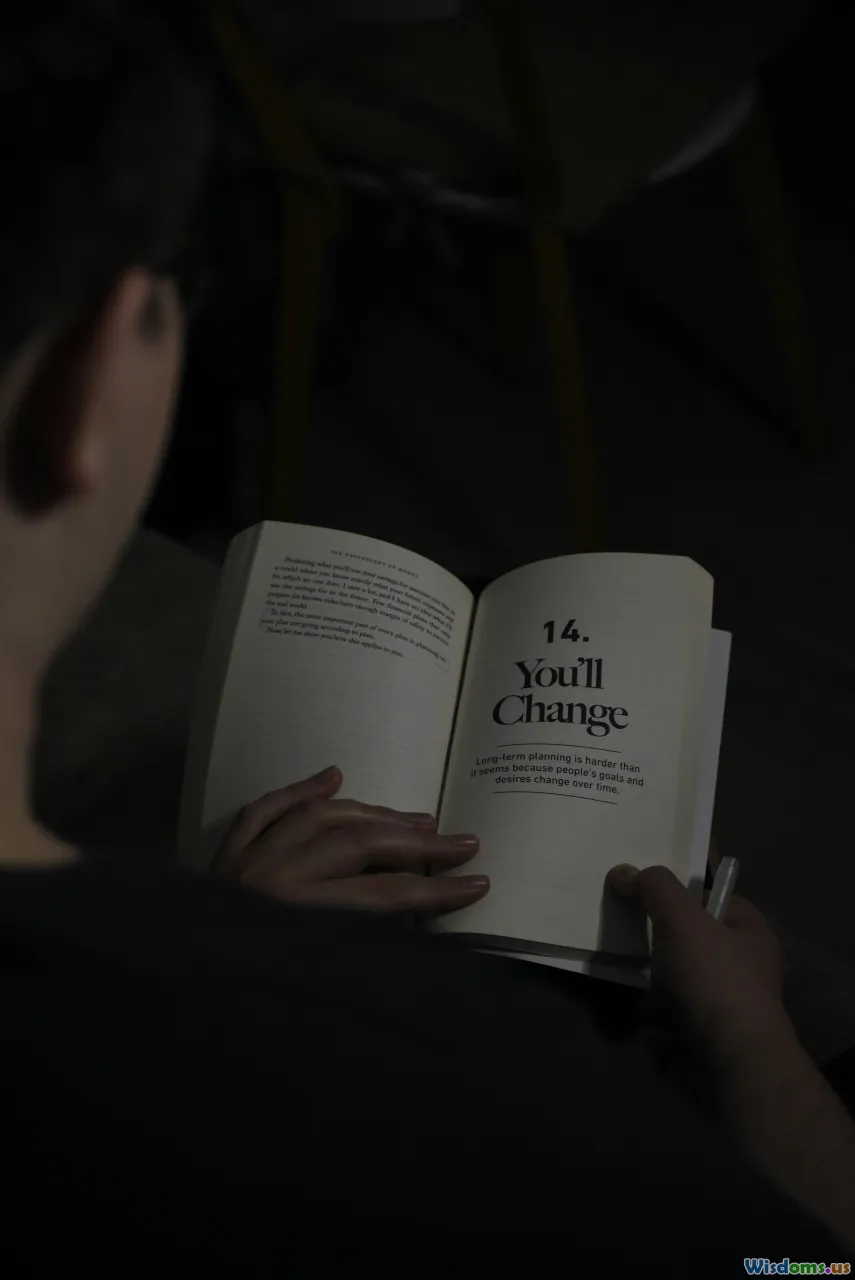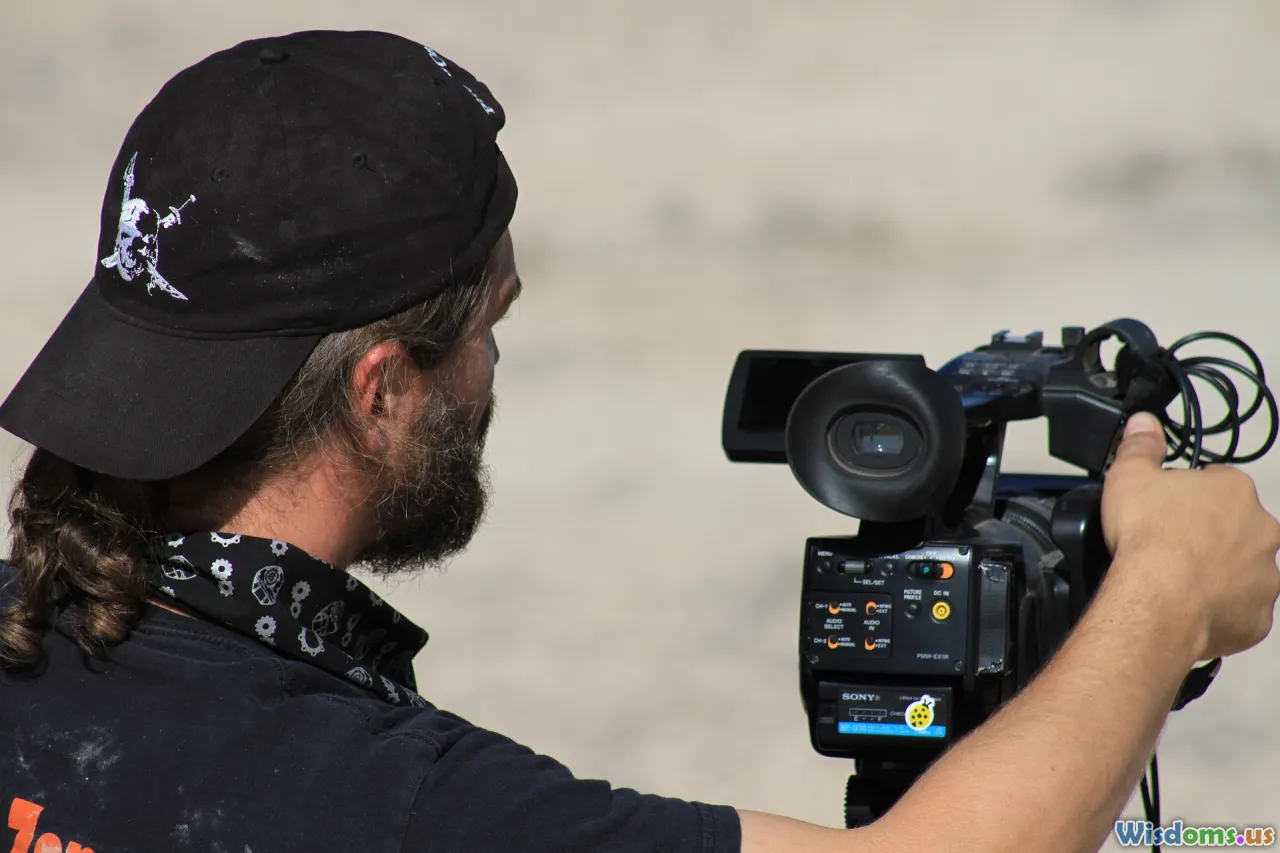
Do Faithful Adaptations Mean Better Audience Reception
15 min read Explores whether faithful adaptations of books and media lead to better audience reception. (0 Reviews)
Do Faithful Adaptations Mean Better Audience Reception?
The age of adaptations is upon us. From streaming giants adapting best-selling novels to beloved video games finding new cinematic life, the conversation surrounding faithfulness—how closely an adaptation sticks to its source material—is more heated than ever. Yet, viewers’ reactions don’t always align with faithfulness alone. So, does staying true to the source automatically mean rave reviews? Let’s dissect the complexities of faithfulness in adaptations by examining successful and not-so-successful cases, exploring what audiences actually want, and discovering actionable ways creators can strike the right balance.
The Faithfulness Dilemma: Defining the Core Question

Adapting a story from one medium to another is more than just translation; it’s transformation. Every adaptation faces choices: what to keep, what to alter, and—just as crucially—what to omit. Faithful adaptations typically strive to preserve plotlines, characters, and themes in their original form.
But why is faithfulness such a polarizing topic? On one side are purists—those who contend that veering from source material betrays fans and diminishes narrative quality. The other camp argues that slavish adherence can cripple creativity and fail to take full advantage of the new medium. Essentially, the question becomes: Is more faithful always better?
Take, for instance, the 2012 film Les Misérables, which stayed remarkably true to the musical play but omitted entire plot lines present in Victor Hugo’s novel. Conversely, the 2005 adaptation of Pride and Prejudice made notable tweaks to condense and modernize Austen’s story, yet found wide critical and audience acclaim. These examples reveal a key insight: Faithfulness can be a double-edged sword, affecting audience reception in complex, sometimes counterintuitive ways.
Charting the Audience: What Do Fans Actually Want?

Clarifying audience expectations is crucial. Not all fans clamor for one-to-one recreations. In fact, several high-profile adaptations demonstrate that audiences reward creative interpretation just as often as they value strict fidelity.
A 2022 survey by The Adaptation Review asked over 5,000 filmgoers about what they prioritize in literary adaptations. Surprisingly, only 39% cited fidelity to plot and character as their top criterion. Far more—53%—valued "emotional truth" and atmosphere over exact replication. Interestingly, diverging from source material didn’t inherently disappoint; what mattered was whether the changes served the story’s essential spirit. If altered aspects felt true to the core of the original, many viewers embraced them.
For example, the Harry Potter films omitted or compressed entire secondary story arcs, combining or omitting characters like Peeves altogether. While die-hard fans debated these choices, the movies’ ability to preserve the series’ tone, themes, and magic won widespread approval.
In contrast, the Percy Jackson films of the 2010s made far broader and less audience-oriented changes, straying from established character arcs and themes. The result? Both critical and fan backlash, not because they were simply different, but because key emotional anchors were lost. This distinction highlights how adaptation choices can be more holistic—and less predictable—than simple "faithfulness" would suggest.
Case Studies: Faithful Adaptations That Succeeded or Flopped

Successful Faithfulness—When Staying True Works
Take the Lord of the Rings trilogy directed by Peter Jackson (2001–2003). While not entirely free from adaptation choices (Tom Bombadil, anyone?), these films meticulously respected Tolkien’s tone, world-building, and character relationships. Critics and fans alike lauded not only the franchise’s epic visuals but also its commitment to Tolkien’s vision, earning 17 Academy Awards and strong box office returns.
Similarly, the Shogun miniseries (both the 1980 and 2024 versions) largely adhered to James Clavell’s sprawling novel. Its loyalty to setting, pacing, and character nuance was central to its reception, with many highlighting the adaptation’s immersive detail.
When Too Much Faithfulness Hampers Adaptation
But not all faithful adaptations land so well. Consider Zack Snyder’s Watchmen (2009), which followed Alan Moore and Dave Gibbons’ graphic novel almost panel-for-panel. While some applauded the bold commitment to source material, others criticized it for being cold and slavish, failing to capture the comic’s satirical, metafictional heart.
Similarly, Sin City delivered frame-perfect visuals, but critics argued that the lack of cinematic adaptation made it feel flat and “stuck on the page.” Faithfulness, in these cases, risked becoming rigidity, sacrificing emotional dynamic and narrative effectiveness.
When Creative Liberty Translates to Better Reception

Counterintuitively, some of the most celebrated adaptations take bolder creative liberties. Consider Stanley Kubrick’s The Shining, based on Stephen King’s novel. Kubrick excised entire swathes of character motivation, ending, and supernatural explanation—much to King’s frustration. Yet, the film has become a horror classic in its own right, acclaimed for its chilling atmosphere and psychological realism. In this case, diverging from narrative details but maintaining key themes (alienation, madness) resulted in enduring audience engagement.
HBO’s Game of Thrones (at least in its initial seasons) provides another case. While showrunners made strategic deviations to accelerate action or deepen character arcs, they largely anchored the story in Martin’s original tone and complexity. Early critical and fan enthusiasm was sky-high—until, notably, the show outpaced the available novels and diverged more broadly, which many cite as a reason for later disgruntlement.
Even Blade Runner—today esteemed as a science-fiction masterpiece—bears little more than a spiritual resemblance to Philip K. Dick’s Do Androids Dream of Electric Sheep? (1968). Yet, by distilling and refocusing the core philosophical themes, it appeals deeply to audiences far beyond the book’s fanbase.
The Medium Is the Message: Why Translations Can't Always Be Literal

Adapting from page to screen, or game to TV, presents intrinsic challenges. What works in one medium may not in another—dialogue, pacing, or introspection in a novel may devolve to stagnation or confusion when visualized. Recognizing this, creators who appropriately "reimagine" while retaining the core identity of the original often earn the strongest receptions.
One illuminating example is The Queen's Gambit (Netflix, 2020), based on Walter Tevis’s novel. The series made structural and tonal changes to maximize the show’s emotional arcs and visual storytelling, while keeping the essence of Beth Harmon’s journey intact—a gamble that resonated, catapulting it to critical and popular success.
Compare this to the much-maligned Eragon (2006) adaptation, which attempted a beat-for-beat translation of Christopher Paolini's novel while sacrificing cinematic pacing and character motivation. The final product failed to engage either fans of the book or new audiences, demonstrating how literalness is not a panacea.
The Role of Fan Service and Originality

In an age of fandoms with unprecedented online voice, many adaptations feel pressure to offer "fan service"—callbacks, Easter eggs, and satisfyingly familiar sequences. However, catering to fans alone sometimes comes at the expense of storytelling quality.
Marvel Studios' run of interconnected films often straddles this fine line. Spider-Man: No Way Home (2021) delighted fans with multi-generational Spider-Man appearances—certified fan service—while keeping the core narrative emotionally resonant. In contrast, Star Wars: The Rise of Skywalker (2019) drew criticism for retconning previous developments seemingly to appease fans, resulting in a confused tone and tepid audience reception.
Adaptations that prioritize strong storytelling and thematic continuity—while also referencing fan-favorite elements—tend to win out. Ultimately, the best adaptations don’t just duplicate stories; they add interpretive value. They are homage and reinvention, all at once.
Actionable Advice for Creators: Striking the Balance

So, how can writers, directors, and producers navigate the faithfulness challenge?
1. Identify Non-Negotiables
Isolate the essential themes, character arcs, or climactic scenes that anchor the original. These are the "non-negotiables"—elements that, if lost, unravel the source's appeal. Understanding these helps creators avoid alienating core fans.
2. Adapt Structure, Not Just Content
Translating structure is as important as preserving dialogue or plot. What works on the page—the pacing of reveals, the slow burn of relationships, the logic of world-building—needs retooling for screen or stage. The success of the BBC’s Sherlock series (2010-2017) stems from re-crafting Conan Doyle’s mysteries for modern London and today’s sensibilities.
3. Respect but Renew
Honor the intent and spirit of the original, but grant your storytellers freedom to enhance, condense, or reinterpret when needed for the new medium. Establishing continuity and thematic resonance anchors the adaptation, even when details shift.
4. Engage with Fans — Wisely
Monitor and respond to fan expectations, but don’t allow this to entirely dictate creative vision. Open dialogues (through Q&As, previews, or social media engagement) can both build anticipation and set realistic expectations about inevitable changes.
5. Leverage Strengths of the New Medium
Ask, “What can cinema/TV do that a novel or game cannot?” Visually dynamic tells, new scenes, or even non-linear presentation might improve upon the book’s strengths, rather than being constrained by them.
The Future of Adaptations: Blending Tradition with Innovation

The streaming era has ushered in more experimental, audience-driven models of adaptation. Limited series, for instance, have allowed for more faithful retellings where appropriate, unbound by film's two-hour limit. Netflix’s The Witcher embraced a complex, multi-timeline structure that, while initially confusing, ultimately won praise for its narrative and adherence to Andrzej Sapkowski's books in spirit—if not always in detail.
Simultaneously, prestige TV has created space for "reimaginings"—from Westworld to The Handmaid's Tale, dazzling viewers by marrying core concepts of older texts with modern issues and cinematic flair.
Hybrid approaches are increasingly common. The acclaimed Japanese animated film Your Name keeps the emotional framework of its source but expands plot and visual artistry uniquely for screen. Even in interactive media—witness The Last of Us HBO series—adapting game mechanics for episodic drama elevated the story beyond fans of the original.
As audiences become more media-literate and diverse, their tolerance for creative deviation and demand for cohesive storytelling will only grow. Faithfulness, then, is best understood as alignment with a work’s essence, not its literal specifics.
Adaptations are a conversation between source and screen—a delicate, ongoing negotiation between honoring the past and embracing the creative promise of the present. Staying strictly faithful to the source may placate some, but it’s rarely the single secret to better audience reception. The real challenge is understanding why we love these stories to begin with—and then delivering something boldly, authentically new while keeping that love alive.
Rate the Post
User Reviews
Popular Posts


















